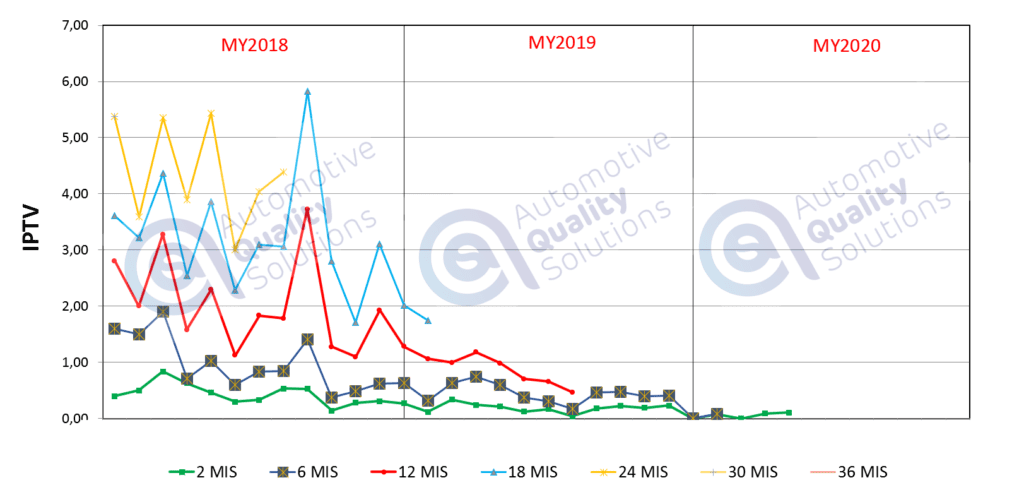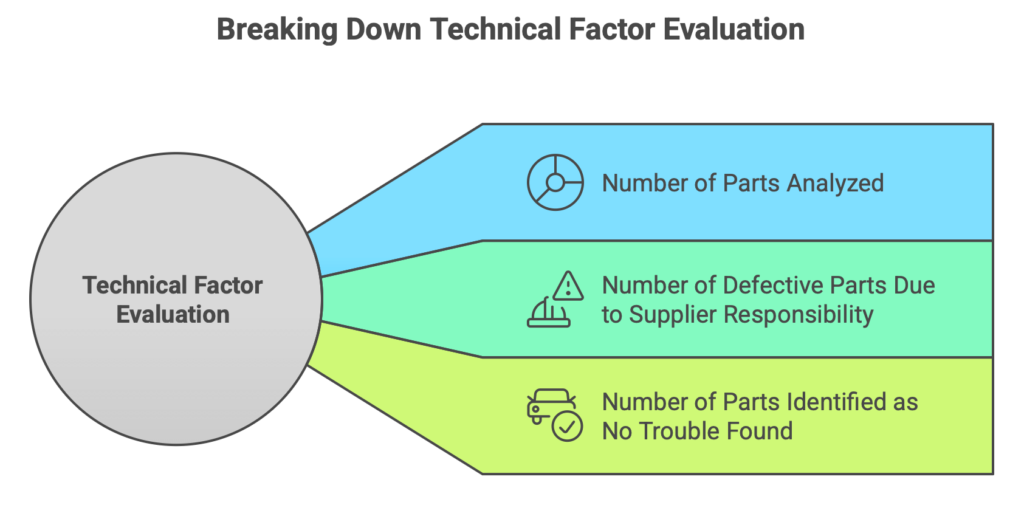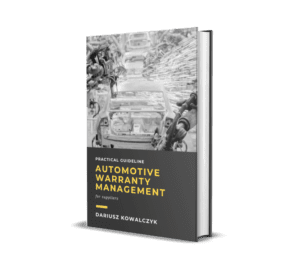The current IATF requirements emphasize not only monitoring quality complaints from customer plants but also automotive warranty management. These are primarily addressed in:
- 10.2.5 – Warranty Management Systems
- 10.2.6 – Customer Complaints and Field Failure Test Analysis
It should be noted that the above points also serve as input data for management reviews, in accordance with 9.3.2.1 (subpart h).
Key Terms in Warranty Management
IPTV (Incidents Per Thousand Vehicles)
Also known as C1000, this indicator measures the number of problems reported by end customers at dealer stations. It does not necessarily indicate component replacement. For example, a dealer may simply update software, lubricate interface elements, or tighten components as needed.
The starting point for defining this indicator involves collaboration between the customer’s engineering team and the organization to create a reliability plan, which corresponds to APQP 1.4 – Product and Process Assumptions.
From the IATF perspective, the reliability plan falls under 8.3.5.1 – Defining Outputs from Design and Development.Below is an example of the relationship between IPTV and MIS:

TF (Technical Factor – %)
The Technical Factor (TF) indicates the percentage of the organization’s financial responsibility for parts replaced under warranty. For suppliers, it is a key metric directly impacting poor quality costs.
Defining the TF value begins immediately after the Start of Production (SOP) with an analysis of the initial parts. Meetings with clients to finalize the TF often occur a few months after project launch, by which time dozens of parts have usually been analyzed (more parts provide greater reliability for the calculation).
The TF evaluation considers the number of parts:
- analyzed within a given period.
- identified as defective due to supplier responsibility.
- where no defect was confirmed (see NTF below).

NTF (No Trouble Found)
“No Trouble Found” refers to cases where warranty returns show no defects upon testing. After performing standard tests, the organization cannot confirm the defect claimed by the end customer.
Additional NTF-related requirements may apply, depending on the customer (OEM):
- For the VW Group, these are detailed in the VDA – Field Failure Analysis manual.
- For the Stellantis-FCA Group, when warranty management is part of the Tutorship program, NTF is determined during pre-return testing. The relevant reference document here is CQI-14 Automotive Warranty Management.
MIS (Months in Service)
MIS measures the duration a vehicle has been in use by the end customer. A standard assumption is that 30 days equal one MIS unit (e.g., 30 days = 1.0 MIS).
For customers like Ford, the equivalent term is TIS (Time-In-Service). Commonly analyzed periods include:
- 3 months (3 MIS)
- 12 months (12 MIS)
- 24 months (24 MIS)
Customers such as VW, GM and Ford may also allow performance analysis for just one month.
Why Automotive Warranty Management is Crucial for Tier 2 Component Producers
Tier 2 component producers play a pivotal role in the automotive supply chain by producing components that impact vehicle quality, reliability and performance.

Therefore, effective warranty management is critical for several reasons:
Customer Satisfaction
Comprehensive warranty coverage and responsive support help build trust and loyalty, enhancing the producer’s reputation and fostering long-term customer relationships.
Cost Control
Proactive warranty management reduces warranty claims and associated expenses, increasing profitability and competitiveness.
Risk Mitigation
Analyzing warranty trends enables early identification of recurring issues. Taking corrective action minimizes recalls, legal liabilities and reputational damage.
Business Relationships
Meeting stringent warranty and claim-handling requirements from Tier 1 suppliers and automakers ensures continued collaboration and business opportunities.
Conclusion
Understanding basic warranty management terms and concepts is essential for organizations actively participating in the automotive supply chain. Proper knowledge helps manage financial risks, maintain quality standards and uphold strong relationships with Tier 1 suppliers and automakers.
For more details on managing warranty returns and related documentation, we invite you to participate in our dedicated training courses.
Download our free ebook Automotive Warranty Management – Practical Guideline for Suppliers




